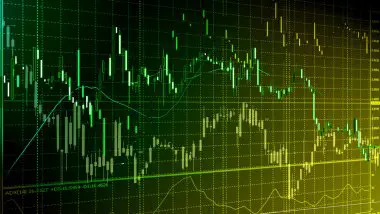
Unveiling the Power of Market Analytics: A Comprehensive Exploration
- Admin
Market analytics stands as a cornerstone of modern finance, providing investors, traders, and businesses with invaluable insights into market trends, opportunities, and risks. In this article, we delve into the world of market analytics, exploring its significance, methodologies, and applications across various financial markets.
Understanding Market Analytics:
Market analytics encompasses the systematic analysis of market data to discern patterns, trends, and correlations that can inform decision-making. It involves the use of statistical tools, mathematical models, and data visualization techniques to extract actionable insights from vast amounts of market information.
Significance of Market Analytics:
Informed Decision-Making: Market analytics empowers stakeholders to make informed decisions based on data-driven insights rather than intuition or guesswork.
Risk Management: By identifying potential risks and vulnerabilities in the market, analytics enables investors to implement risk mitigation strategies and protect their portfolios.
Opportunity Identification: Analyzing market data helps uncover investment opportunities, undervalued assets, and emerging trends, allowing investors to capitalize on market inefficiencies.
Performance Evaluation: Market analytics enables the evaluation of investment strategies, portfolio performance, and market efficiency, facilitating continuous improvement and optimization.
Methodologies of Market Analytics:
Technical Analysis: Technical analysts examine historical price data, trading volume, and market patterns to forecast future price movements and identify trading opportunities.
Fundamental Analysis: Fundamental analysts assess the intrinsic value of assets based on economic, financial, and qualitative factors such as earnings, revenue, industry trends, and macroeconomic indicators.
Sentiment Analysis: Sentiment analysis involves gauging market sentiment and investor psychology through indicators such as sentiment surveys, social media sentiment, and volatility indices.
Quantitative Analysis: Quantitative analysts utilize mathematical models, statistical techniques, and algorithmic trading strategies to analyze market data and develop predictive models.
Applications of Market Analytics:
Equity Markets: Market analytics is extensively used in analyzing stocks, identifying trading opportunities, and managing portfolios in equity markets.
Foreign Exchange (Forex) Markets: In the forex market, analytics helps forecast currency movements, manage currency risk, and optimize currency trading strategies.
Commodity Markets: Market analytics assists in analyzing commodity prices, supply-demand dynamics, and commodity market trends for trading and investment decisions.
Derivatives Markets: In derivatives markets, analytics aids in pricing derivatives, assessing risk exposure, and developing hedging strategies.
Conclusion:
Market analytics serves as a powerful tool for navigating the complexities of financial markets, enabling stakeholders to make informed decisions, manage risks, and capitalize on opportunities. By leveraging sophisticated analytical techniques and cutting-edge technology, market participants can gain a competitive edge in today's fast-paced and dynamic financial landscape. Embracing market analytics as a strategic asset is essential for achieving success and prosperity in the ever-evolving world of finance.
